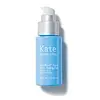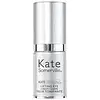What's inside
What's inside
 Key Ingredients
Key Ingredients

 Benefits
Benefits

 Concerns
Concerns

 Ingredients Side-by-side
Ingredients Side-by-side

Water
Skin ConditioningCoconut Alkanes
EmollientPentylene Glycol
Skin ConditioningNiacinamide
SmoothingSalicylic Acid
MaskingCaprylyl Methicone
Skin ConditioningGlycerin
HumectantPropanediol
SolventCetearyl Olivate
Polysilicone-11
Potassium Cetyl Phosphate
EmulsifyingSorbitan Olivate
EmulsifyingCarbomer
Emulsion StabilisingMicrocitrus Australis Fruit Extract
Skin ConditioningMicrocitrus Australasica Fruit Extract
Lens Esculenta Fruit Extract
Skin ConditioningPyrus Malus Fruit Extract
Skin ConditioningCitrullus Lanatus Fruit Extract
Skin ConditioningCitrus Glauca Fruit Extract
HumectantSodium Lactate
BufferingPhytosphingosine
Skin ConditioningAdenosine
Skin ConditioningDecyl Glucoside
Cleansing1,2-Hexanediol
Skin ConditioningSodium PCA
HumectantAlpha-Glucan Oligosaccharide
CleansingMaltodextrin
AbsorbentPolyglyceryl-3 Caprate
EmulsifyingButylene Glycol
HumectantAminomethyl Propanol
BufferingPolysorbate 20
EmulsifyingCaprylhydroxamic Acid
Zinc PCA
HumectantThymol
AntimicrobialTerpineol
MaskingHexylene Glycol
EmulsifyingCaprylyl Glycol
EmollientPolydextrose
HumectantDextrin
AbsorbentAmylopectin
Lactobacillus Ferment
Skin ConditioningPhenoxyethanol
PreservativeDisodium EDTA
Sodium Benzoate
MaskingPotassium Sorbate
PreservativeWater, Coconut Alkanes, Pentylene Glycol, Niacinamide, Salicylic Acid, Caprylyl Methicone, Glycerin, Propanediol, Cetearyl Olivate, Polysilicone-11, Potassium Cetyl Phosphate, Sorbitan Olivate, Carbomer, Microcitrus Australis Fruit Extract, Microcitrus Australasica Fruit Extract, Lens Esculenta Fruit Extract, Pyrus Malus Fruit Extract, Citrullus Lanatus Fruit Extract, Citrus Glauca Fruit Extract, Sodium Lactate, Phytosphingosine, Adenosine, Decyl Glucoside, 1,2-Hexanediol, Sodium PCA, Alpha-Glucan Oligosaccharide, Maltodextrin, Polyglyceryl-3 Caprate, Butylene Glycol, Aminomethyl Propanol, Polysorbate 20, Caprylhydroxamic Acid, Zinc PCA, Thymol, Terpineol, Hexylene Glycol, Caprylyl Glycol, Polydextrose, Dextrin, Amylopectin, Lactobacillus Ferment, Phenoxyethanol, Disodium EDTA, Sodium Benzoate, Potassium Sorbate
Water
Skin ConditioningGlycerin
HumectantPropanediol
SolventCoco-Caprylate/Caprate
EmollientCocoglycerides
EmollientButyrospermum Parkii Butter
Skin ConditioningStearyl Heptanoate
EmollientPentaerythrityl Distearate
EmulsifyingSqualane
EmollientTriheptanoin
Skin ConditioningPotassium Cetyl Phosphate
EmulsifyingStearyl Alcohol
EmollientStearyl Caprylate
Emollient1,2-Hexanediol
Skin ConditioningGlyceryl Stearate Citrate
EmollientTetrahexyldecyl Ascorbate
AntioxidantPalmitoyl Tripeptide-5
Skin ConditioningPalmitoyl Hexapeptide-12
Skin ConditioningMorus Alba Leaf Extract
Skin ConditioningUndaria Pinnatifida Extract
Skin ConditioningHydrolyzed Hyaluronic Acid
HumectantAdenosine
Skin ConditioningCeramide Ng
Skin ConditioningPhytosterols
Skin ConditioningFaex
Skin ConditioningWithania Somnifera Root Extract
Skin ConditioningSoy Amino Acids
Skin ConditioningHordeum Vulgare Extract
EmollientHydrolyzed Soy Protein
HumectantCucumis Sativus Seed Extract
Skin ConditioningCorallina Officinalis Extract
Skin ConditioningHelianthus Annuus Seed Oil
EmollientDipeptide Diaminobutyroyl Benzylamide Diacetate
Skin ConditioningC12-15 Alkyl Benzoate
AntimicrobialCarthamus Tinctorius Seed Oil
MaskingDilinoleic Acid/Butanediol Copolymer
Castor Oil/Ipdi Copolymer
PEG-10 Phytosterol
EmulsifyingAmmonium Acryloyldimethyltaurate/Vp Copolymer
Tocopheryl Acetate
AntioxidantBehenyl Alcohol
EmollientTribehenin
EmollientPotassium Sorbate
PreservativeSodium Benzoate
MaskingLactic Acid
BufferingCitric Acid
BufferingDisodium EDTA
Ethylhexylglycerin
Skin ConditioningPhenoxyethanol
PreservativeWater, Glycerin, Propanediol, Coco-Caprylate/Caprate, Cocoglycerides, Butyrospermum Parkii Butter, Stearyl Heptanoate, Pentaerythrityl Distearate, Squalane, Triheptanoin, Potassium Cetyl Phosphate, Stearyl Alcohol, Stearyl Caprylate, 1,2-Hexanediol, Glyceryl Stearate Citrate, Tetrahexyldecyl Ascorbate, Palmitoyl Tripeptide-5, Palmitoyl Hexapeptide-12, Morus Alba Leaf Extract, Undaria Pinnatifida Extract, Hydrolyzed Hyaluronic Acid, Adenosine, Ceramide Ng, Phytosterols, Faex, Withania Somnifera Root Extract, Soy Amino Acids, Hordeum Vulgare Extract, Hydrolyzed Soy Protein, Cucumis Sativus Seed Extract, Corallina Officinalis Extract, Helianthus Annuus Seed Oil, Dipeptide Diaminobutyroyl Benzylamide Diacetate, C12-15 Alkyl Benzoate, Carthamus Tinctorius Seed Oil, Dilinoleic Acid/Butanediol Copolymer, Castor Oil/Ipdi Copolymer, PEG-10 Phytosterol, Ammonium Acryloyldimethyltaurate/Vp Copolymer, Tocopheryl Acetate, Behenyl Alcohol, Tribehenin, Potassium Sorbate, Sodium Benzoate, Lactic Acid, Citric Acid, Disodium EDTA, Ethylhexylglycerin, Phenoxyethanol
Ingredients Explained
These ingredients are found in both products.
Ingredients higher up in an ingredient list are typically present in a larger amount.
1,2-Hexanediol is a synthetic liquid and another multi-functional powerhouse.
It is a:
- Humectant, drawing moisture into the skin
- Emollient, helping to soften skin
- Solvent, dispersing and stabilizing formulas
- Preservative booster, enhancing the antimicrobial activity of other preservatives
Adenosine is in every living organism. It is one of four components in nucleic acids that helps store our DNA.
Adenosine has many benefits when used. These benefits include hydrating the skin, smoothing skin, and reducing wrinkles. Once applied, adenosine increases collagen production. It also helps with improving firmness and tissue repair.
Studies have found adenosine may also help with wound healing.
In skincare products, Adenosine is usually derived from yeast.
Learn more about AdenosineDisodium EDTA plays a role in making products more stable by aiding other preservatives.
It is a chelating agent, meaning it neutralizes metal ions that may be found in a product.
Disodium EDTA is a salt of edetic acid and is found to be safe in cosmetic ingredients.
Learn more about Disodium EDTAGlycerin is already naturally found in your skin. It helps moisturize and protect your skin.
A study from 2016 found glycerin to be more effective as a humectant than AHAs and hyaluronic acid.
As a humectant, it helps the skin stay hydrated by pulling moisture to your skin. The low molecular weight of glycerin allows it to pull moisture into the deeper layers of your skin.
Hydrated skin improves your skin barrier; Your skin barrier helps protect against irritants and bacteria.
Glycerin has also been found to have antimicrobial and antiviral properties. Due to these properties, glycerin is often used in wound and burn treatments.
In cosmetics, glycerin is usually derived from plants such as soybean or palm. However, it can also be sourced from animals, such as tallow or animal fat.
This ingredient is organic, colorless, odorless, and non-toxic.
Glycerin is the name for this ingredient in American English. British English uses Glycerol/Glycerine.
Learn more about GlycerinPhenoxyethanol is a preservative that has germicide, antimicrobial, and aromatic properties. Studies show that phenoxyethanol can prevent microbial growth. By itself, it has a scent that is similar to that of a rose.
It's often used in formulations along with Caprylyl Glycol to preserve the shelf life of products.
Potassium Cetyl Phosphate is the potassium salt of a mixture. This mixture consists of the esters from phosphoricacid and cetyl alcohol.
Potassium Cetyl Phosphate is an emulsifier and cleansing agent. Emulsifiers help stabilize a product. It does this by preventing certain ingredients from separating.
As a cleansing agent, Potassium Cetyl Phosphate helps gather oils, dirts, and pollutants from your skin. This makes it easier to rinse them away with water.
Learn more about Potassium Cetyl PhosphatePotassium Sorbate is a preservative used to prevent yeast and mold in products. It is commonly found in both cosmetic and food products.
This ingredient comes from potassium salt derived from sorbic acid. Sorbic acid is a natural antibiotic and effective against fungus.
Both potassium sorbate and sorbic acid can be found in baked goods, cheeses, dried meats, dried fruit, ice cream, pickles, wine, yogurt, and more.
You'll often find this ingredient used with other preservatives.
Learn more about Potassium SorbatePropanediol is an all-star ingredient. It softens, hydrates, and smooths the skin.
It’s often used to:
Propanediol is not likely to cause sensitivity and considered safe to use. It is derived from corn or petroleum with a clear color and no scent.
Learn more about PropanediolSodium Benzoate is a preservative. It's used in both cosmetic and food products to inhibit the growth of mold and bacteria. It is typically produced synthetically.
Both the US FDA and EU Health Committee have approved the use of sodium benzoate. In the US, levels of 0.1% (of the total product) are allowed.
Sodium benzoate works as a preservative by inhibiting the growth of bacteria inside of cells. It prevents the cell from fermenting a type of sugar using an enzyme called phosphofructokinase.
It is the salt of benzoic acid. Foods containing sodium benzoate include soda, salad dressings, condiments, fruit juices, wines, and snack foods.
Studies for using ascorbic acid and sodium benzoate in cosmetics are lacking, especially in skincare routines with multiple steps.
We always recommend speaking with a professional, such as a dermatologist, if you have any concerns.
Learn more about Sodium BenzoateWater. It's the most common cosmetic ingredient of all. You'll usually see it at the top of ingredient lists, meaning that it makes up the largest part of the product.
So why is it so popular? Water most often acts as a solvent - this means that it helps dissolve other ingredients into the formulation.
You'll also recognize water as that liquid we all need to stay alive. If you see this, drink a glass of water. Stay hydrated!
Learn more about Water